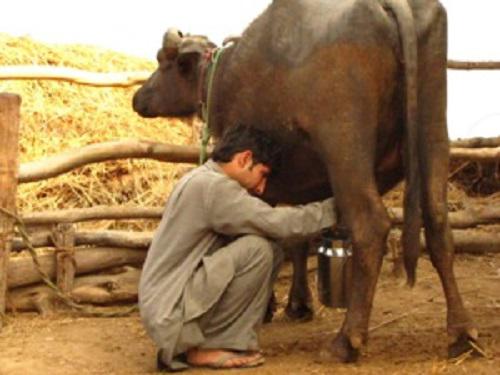Abishek Harihar
Other projects
11 Feb 2010
Understanding the Response of Wild Ungulate Prey to Livestock Mediated Competition in Western Terai Arc Landscape – Implications for Developing Management Strategies to Restore Corridors
Within the north-western Terai Arc Landscape, Gujjars inhabit forests with high tiger-use and suffer livestock losses owing to depredation. Given that retaliatory killing could severely impact tigers within the landscape, this study will assess the extent of livestock depredation and diet profile of tigers, liaise with relevant local bodies providing compensation and develop sustainable methods to minimise livestock-mediated disturbances in non-protected forests.

Buffaloes form the mainstay of Gujjar livelihood.
Our previous study in the north western TAL documented the response of wild-prey densities and population performance to a gradient of livestock densities and assessed socio-economic status of Gujjars. The significant findings of our socioeconomic surveys include:
(a) many Gujjars inhabit forests with high tiger use and suffered livestock losses owing to depredation,
(b) most households were unaware of existing compensation schemes and
(c) livestock holdings exceeded permitted numbers thereby causing a heightened potential for conflict.
Given that retaliatory killing could severely impact tiger populations within the landscape, the present study will address the contribution of wild-prey and livestock to the diet of tiger across a gradient of prey availability and engage with the community to develop feasible alternatives of minimising/mitigating conflict. We also wish to identify sustainable livelihood alternatives that could minimise livestock mediated disturbances within forest patches outside of protected areas.
The proposed study (12 months) will assess the extent and nature of human-tiger conflict and develop ways to minimise disturbance in critical tiger habitats in the nw-TAL. The objectives of the study would be to:
(a) Assess the extent of livestock depredation and diet profile of tigers,
(b) Develop linkages between Gujjars and relevant local bodies providing compensation, and
(c) Identify feasible strategies to minimise livestock-mediated disturbances as well as conflict owing to livestock depredation in non-protected forests.
The role of wild-prey: livestock ratios in understanding livestock depredation behaviour by tigers have often been ignored while trying to minimise/mitigate conflict. Through our assessment, we hope to generate data which would overcome this limitation and facilitate in evaluating the condition for tigers across forest patches especially outside of protected areas. We expect that site-specific solutions to minimise/mitigate conflict developed through active participation of local communities could be more sustainable. We also wish to prioritize and develop methods by which disturbances may be minimised in critical tiger habitats and would thus require evaluating livelihood options in consultation with Gujjars. Thereby, we expect to aid management in developing well-informed and socially responsible strategies to both minimise/mitigate conflict as well as provide socially just alternatives of livelihood to ensure long-term viability of tigers in the landscape.